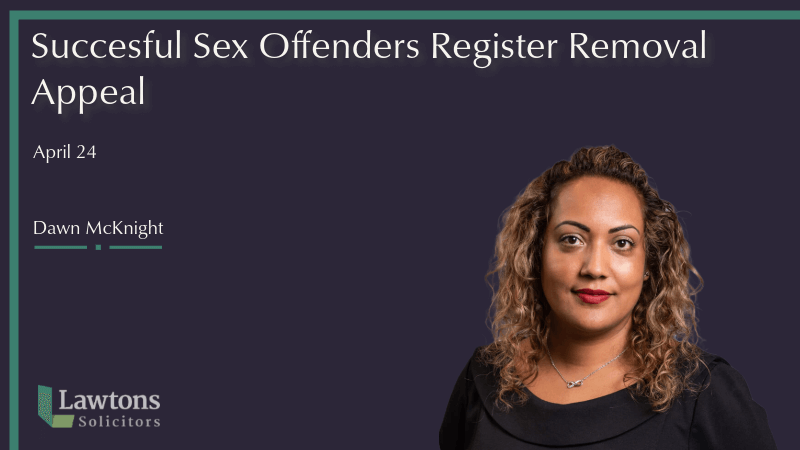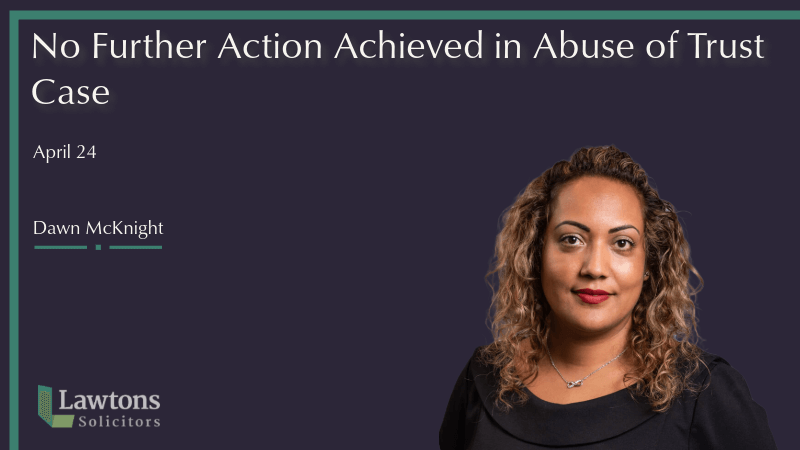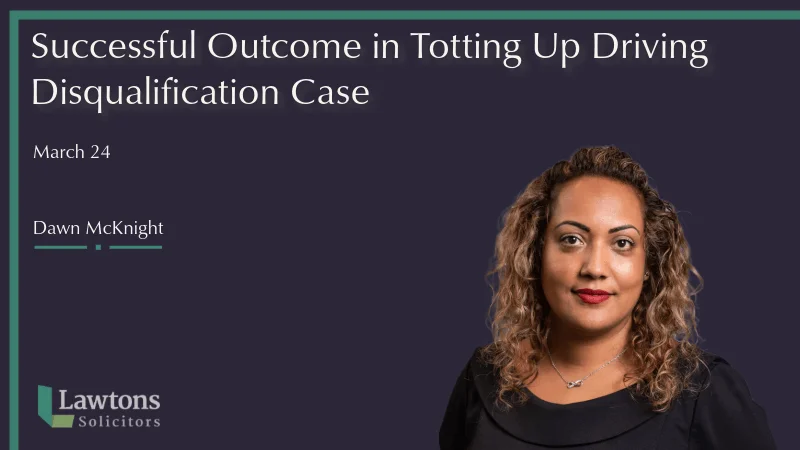Any type of indecent image offence is treated extremely seriously under UK law. Severe punishments for both possession and making offences are intended to act as a deterrent against other offenders, and the public and press often weigh in on this controversial subject. This means that the consequences of a conviction, or even the stigma associated with an accusation, can be life-changing and do long-term damage to your reputation when cases aren’t handled properly. If you are arrested or asked to attend the police station to be questioned in connection with possession of indecent images then it is vitally important to talk to a specialist sexual offence solicitor without delay.
At Lawtons, our legal teams are highly experienced in dealing with these types of cases and will approach your case sensitively and without judgement. We are here to advise and guide you at every step of the difficult process that may lie ahead, working tirelessly towards the best possible outcome for you and your loved ones. Your future is on the line; do not hesitate to contact our team by calling 0333 577 0522.Because indecent images offences are frequently in the news headlines, an accusation or charge of any type carries with it significant stigma. If you are arrested or under investigation in connection with indecent images it is crucial to fully understand these different types – and what a possession offence is.
What types of indecent image offences are there?
Generally speaking, current UK law splits the most common indecent image offences into two main categories which are often viewed interchangeably. These are:
- Possession which can refer to either physical or digital possession of a prohibited image. Compared with the broader category of ‘making’, it is a relatively simple offence to define in this sense. However, it can become complicated when forensic investigators try to understand whether attempts have been made to delete an image.
- Making rarely refers to the actual taking of a picture, despite its name – although occasionally it can. The actual creation of the original image is normally referred to as “production” of the image. Making most often refers to the creation of a digital image when it is downloaded or saved to a device, whether knowingly or not. Forensic investigations often attempt to determine whether an image has been made deliberately or accidentally, and criminal cases may proceed differently if one or the other of these is established.
There are further categories of indecent image offences which are viewed more seriously, and these concern the distribution and production of such material, each of which carries its own sentencing guidelines.
What are the categories of indecent image
Under guidelines which were last updated in 2014, indecent images of children are now graded into three categories under UK law. Offences around possessing indecent images of children are charged and sentenced in accordance with these categories.
- Category A images are the most severe. These depict obscene penetrative sexual activity, gross assault, sadism, bestiality or a child in pain.
- Category B images show non-penetrative sexual assault and explicit sexual activity, such as oral sexual activity, and in most cases involve the presence of an adult.
- Category C images contain sexually suggestive content or are taken in a nudist environment. It is often the intentions of the accused individual which make these images indecent as they are not always overtly sexual in nature.
Sentencing guidelines for possession of indecent images
If you are accused of possession of an indecent image or images, then the sentencing guidelines provide the following as “starting points”:
- A minimum one-year custodial sentence for possessing category A indecent images, which can go as high as three years
- A minimum 26-week custodial sentence for possessing category B indecent images, which can go as high as 18 months
- Anywhere between a high-level community order and a 26-week custodial sentence for possessing category C indecent images
What to do if you are accused of possessing indecent images
Securing specialist legal representation as early as possible in your case can make a real difference to its outcome. With indecent image offences in particular, there can be a significant difference between co-operating with a police investigation and jeopardising a defence case, balancing this is vital from the outset. We will meticulously examine the facts of your individual case and circumstances in order to build the most robust defence possible, keeping you informed and reassured at every step.
Using our expertise we can help you to reduce the damage to your private life which can be sustained by these kinds of accusations, especially as stigma can remain even when a defendant has been cleared of wrongdoing. At Lawtons we will endeavour to draw on our years of experience in this difficult area of the law to guide you towards the most positive outcome we can achieve.
Do not hesitate to speak to our highly experienced team today by calling 0333 577 0522.





